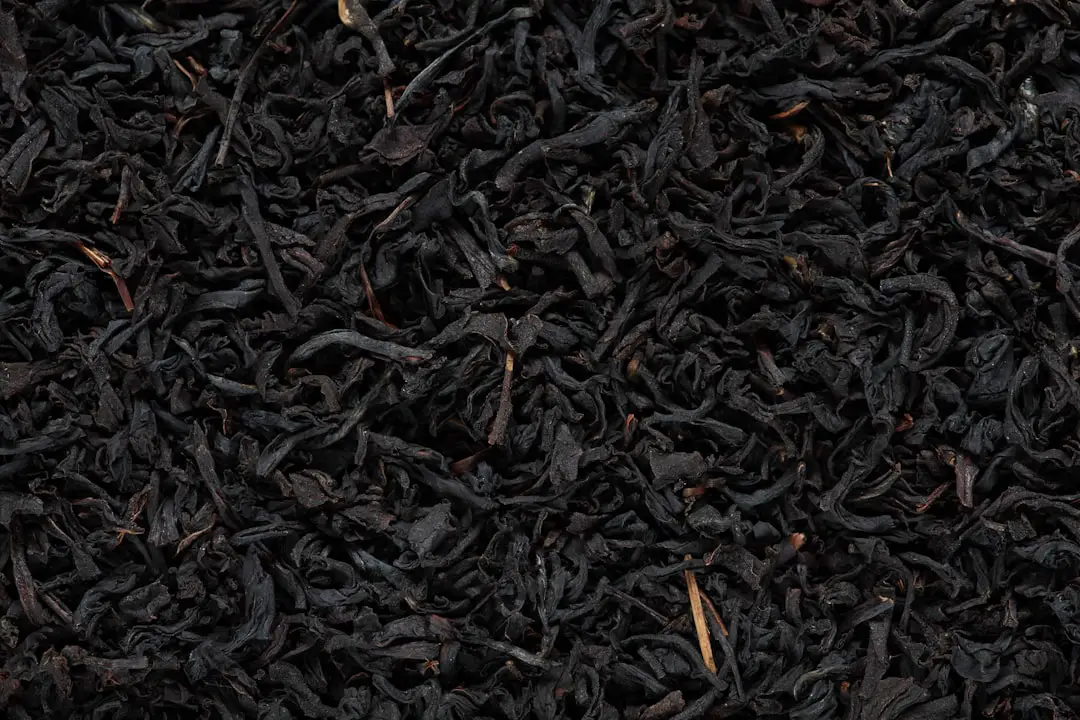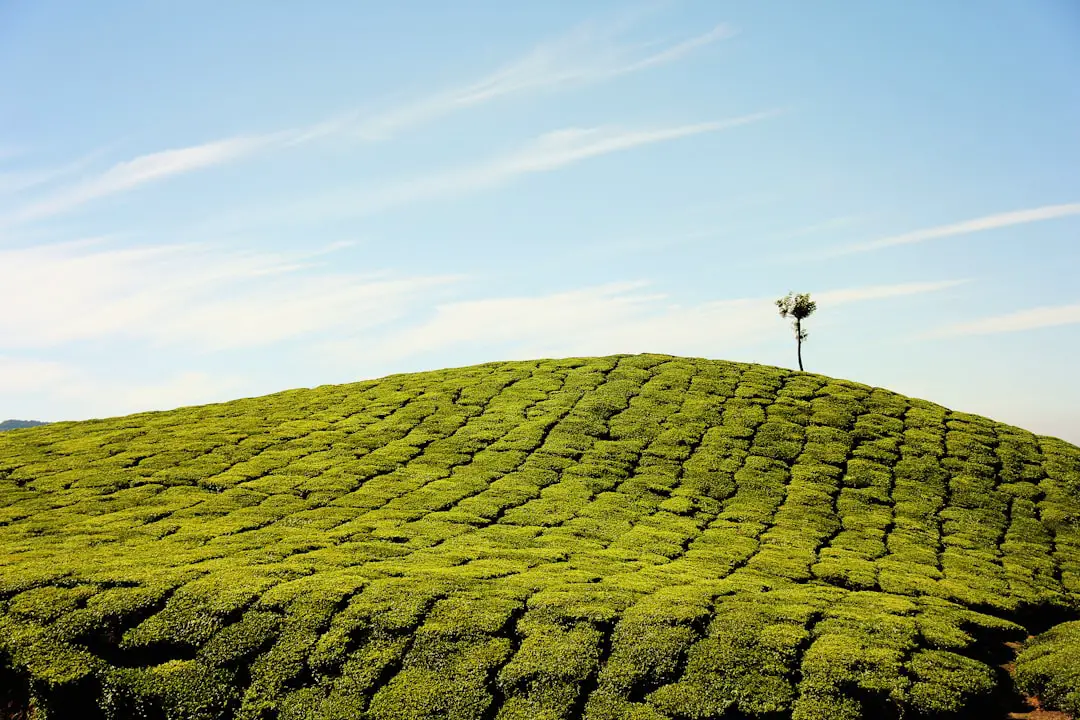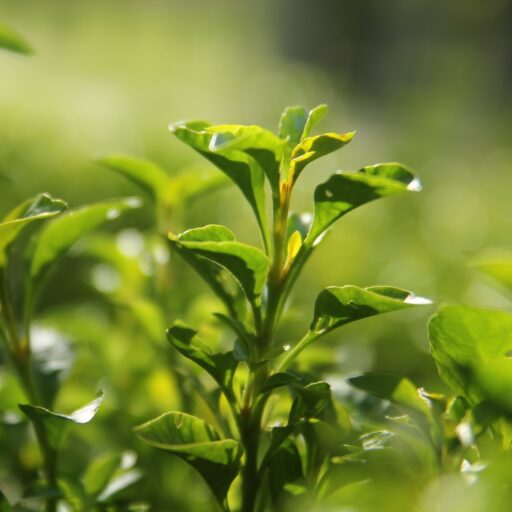Support our educational content for free when you purchase through links on our site. Learn more
Is Tea Farming Profitable? 10 Secrets to Success Revealed [2024] 🍵
Have you ever sipped a warm cup of tea and wondered about the journey of that delicate leaf from farm to cup? 🌱 Well, you’re not alone! Many aspiring tea farmers ponder the question: Is tea farming profitable? As we dive into this aromatic world, we’ll uncover the secrets behind successful tea farming, from the rich history of this beloved beverage to the nitty-gritty of market trends and sustainable practices. Spoiler alert: the answer might surprise you!
Imagine waking up to the lush green hills of a tea plantation, the sun rising over rows of meticulously tended tea bushes, and the satisfaction of knowing that your hard work will yield not just a delicious beverage but a potentially lucrative business. In this article, we’ll explore the factors that can make or break your tea farming venture, share inspiring success stories, and reveal how you can tap into the growing market for specialty teas. Ready to steep yourself in knowledge? Let’s brew up some insights!
Key Takeaways
- High Demand: Specialty teas are increasingly popular, making tea farming a potentially lucrative venture.
- Sustainable Practices: Implementing eco-friendly methods can enhance long-term profitability.
- Market Understanding: Knowing your target market and trends is crucial for success.
- Quality Matters: Producing high-quality tea is essential for commanding premium prices.
- Challenges Exist: Be prepared for high initial investments, labor costs, and market fluctuations.
For those ready to embark on this flavorful journey, check out our recommended products for quality tea plants and essential tea farming resources to get you started! 🌿
Table of Contents
- Quick Tips and Facts About Tea Farming Profitability
- The Rich History of Tea Farming: From Leaf to Profit
- Understanding the Economics of Tea Farming: Is It Worth It?
- Factors Influencing Tea Farming Profitability
- The Best Tea Varieties for Profit: A Grower’s Guide
- Tea Farming Procedures: From Planting to Harvesting
- Market Trends: How to Sell Your Tea for Maximum Profit
- Sustainable Practices in Tea Farming: Profit with Purpose
- Common Challenges in Tea Farming and How to Overcome Them
- Success Stories: Profitable Tea Farmers Share Their Secrets
- Conclusion
- Recommended Links
- FAQ
- Reference Links
Quick Tips and Facts About Tea Farming Profitability
Tea farming can be a profitable venture, but it requires careful consideration of various factors. Here are some quick tips and facts to consider:
- Initial investment: Tea farming requires a significant initial investment in land, equipment, and labor.
- Labor costs: Labor costs can account for up to 50% of the total cost of tea production.
- Market demand: Understanding market demand and trends is crucial for profitable tea farming.
- Quality control: Producing high-quality tea is essential for commanding a premium price.
- Sustainability: Sustainable tea farming practices can increase profitability in the long run.
The Rich History of Tea Farming: From Leaf to Profit

Tea farming has a rich history that spans thousands of years. From ancient China to modern-day tea plantations, tea farming has evolved significantly over time. Here’s a brief overview:
Origins of Tea Farming
Tea farming originated in ancient China over 4,000 years ago. According to legend, tea was first discovered by the Chinese Emperor Shennong in 2737 BCE. Tea quickly became an important crop in China, with tea farming spreading throughout the country.
Tea Farming in Asia
Tea farming spread throughout Asia, with countries like Japan, India, and Sri Lanka becoming major tea producers. Tea farming in these countries was often done on small-scale family farms, with tea leaves being hand-picked and processed using traditional methods.
Tea Farming in the West
Tea farming was introduced to the West by European colonizers, who brought tea plants back from Asia. Tea farming in the West was often done on large-scale plantations, with tea leaves being machine-picked and processed using modern technology.
Understanding the Economics of Tea Farming: Is It Worth It?
Tea farming can be a profitable venture, but it requires careful consideration of various economic factors. Here are some key economic considerations:
Initial Investment
Tea farming requires a significant initial investment in land, equipment, and labor. The cost of land can vary widely depending on factors like location, soil quality, and climate. Equipment costs can also be high, especially for large-scale tea farming operations.
Labor Costs
Labor costs can account for up to 50% of the total cost of tea production. Tea farming requires a significant amount of labor, especially during peak production periods. Labor costs can vary widely depending on factors like location, labor laws, and the cost of living.
Market Demand
Understanding market demand and trends is crucial for profitable tea farming. Tea is a popular beverage, with a growing demand for specialty teas. However, the market can be highly competitive, with many tea farmers competing for market share.
Quality Control
Producing high-quality tea is essential for commanding a premium price. Tea quality can be affected by factors like soil quality, climate, and processing methods. Tea farmers must carefully control these factors to produce high-quality tea.
Factors Influencing Tea Farming Profitability
Tea farming profitability can be influenced by a range of factors, including:
Market Trends
Market trends can significantly impact tea farming profitability. Growing demand for specialty teas can increase prices and profitability, while a decline in demand can lead to lower prices and reduced profitability.
Weather and Climate
Weather and climate can significantly impact tea farming profitability. Droughts, floods, and extreme weather events can damage tea crops and reduce yields, while favorable weather conditions can increase yields and improve quality.
Soil Quality
Soil quality can significantly impact tea farming profitability. Tea plants require well-draining, fertile soil to produce high-quality tea. Soil quality can be affected by factors like erosion, nutrient depletion, and pollution.
Labor Costs
Labor costs can significantly impact tea farming profitability. High labor costs can reduce profitability, while low labor costs can increase profitability.
The Best Tea Varieties for Profit: A Grower’s Guide
Choosing the right tea variety can be crucial for profitable tea farming. Here are some popular tea varieties that can be profitable:
Black Tea
Black tea is one of the most popular tea varieties, with a high demand in markets around the world. Black tea is made by oxidizing tea leaves, which gives them their characteristic flavor and color.
Green Tea
Green tea is another popular tea variety, with a high demand in markets around the world. Green tea is made by steaming or pan-frying tea leaves, which helps preserve their natural antioxidants.
Oolong Tea
Oolong tea is a partially fermented tea variety that is popular in markets around the world. Oolong tea is made by allowing tea leaves to partially oxidize, which gives them a complex flavor profile.
Tea Farming Procedures: From Planting to Harvesting
Tea farming procedures can vary widely depending on factors like climate, soil quality, and tea variety. Here are the basic steps involved in tea farming:
Planting
Tea plants are typically planted in well-draining, fertile soil. Tea farmers must carefully prepare the soil before planting, ensuring that it is free of weeds and other contaminants.
Pruning
Tea plants require regular pruning to promote healthy growth and increase yields. Tea farmers must carefully prune tea plants to avoid damaging them.
Harvesting
Tea leaves are typically harvested by hand, although some tea farmers may use mechanical harvesters. Tea leaves are picked at the peak of freshness, when they are young and tender.
Market Trends: How to Sell Your Tea for Maximum Profit
Understanding market trends is crucial for selling tea for maximum profit. Here are some tips for selling tea:
Identify Your Target Market
Tea farmers must identify their target market before selling their tea. This can include specialty tea shops, online retailers, or wholesale distributors.
Develop a Marketing Strategy
Tea farmers must develop a marketing strategy that targets their target market. This can include social media marketing, email marketing, or trade show attendance.
Create a Brand Identity
Tea farmers must create a brand identity that sets them apart from other tea farmers. This can include a unique logo, packaging, and brand messaging.
Sustainable Practices in Tea Farming: Profit with Purpose
Sustainable tea farming practices can increase profitability in the long run. Here are some sustainable practices that tea farmers can adopt:
Organic Farming
Organic farming is a sustainable practice that eliminates the use of synthetic pesticides and fertilizers. Organic tea farming can increase yields and improve tea quality.
Rainwater Harvesting
Rainwater harvesting is a sustainable practice that collects and stores rainwater for irrigation. Rainwater harvesting can reduce water costs and increase yields.
Biodiversity Conservation
Biodiversity conservation is a sustainable practice that protects natural ecosystems. Biodiversity conservation can increase yields and improve tea quality.
Common Challenges in Tea Farming and How to Overcome Them
Tea farming can be challenging, with many tea farmers facing common challenges like pests, diseases, and climate change. Here are some tips for overcoming these challenges:
Pests and Diseases
Tea farmers must carefully monitor their tea plants for pests and diseases. Organic pesticides and fungicides can be used to control infestations.
Climate Change
Climate change can significantly impact tea farming, with rising temperatures and changing weather patterns. Tea farmers must adapt to these changes by adopting sustainable practices like rainwater harvesting and biodiversity conservation.
Market Fluctuations
Market fluctuations can significantly impact tea farming, with prices rising and falling in response to changes in demand. Tea farmers must diversify their markets and develop a marketing strategy to mitigate these fluctuations.
Success Stories: Profitable Tea Farmers Share Their Secrets
Here are some success stories from profitable tea farmers:
The He Family Farm
The He family farm in Laoshan Village, China, is a small-scale tea farm that has been in operation for generations. The farm produces high-quality tea using sustainable practices like organic farming and biodiversity conservation.
The Charleston Tea Plantation
The Charleston Tea Plantation in South Carolina, USA, is a large-scale tea farm that produces high-quality tea using modern technology. The farm has adopted sustainable practices like rainwater harvesting and solar power.
Please stay tuned for our next article where we will cover the Conclusion, Recommended Links, FAQ, and Reference Links.
Conclusion

In summary, tea farming can indeed be profitable, but it requires a careful balance of investment, labor management, market understanding, and sustainable practices. The journey from planting to harvesting is filled with challenges, but with the right strategies, tea farmers can reap the rewards of their hard work.
Positives:
- High Demand: Specialty teas are increasingly popular, providing a lucrative market.
- Sustainable Practices: Implementing eco-friendly methods can enhance profitability in the long run.
- Quality Control: Producing high-quality tea allows farmers to command better prices.
Negatives:
- High Initial Investment: The upfront costs for land, equipment, and labor can be substantial.
- Labor-Intensive: Tea farming requires significant manual labor, which can drive up costs.
- Market Fluctuations: Prices can be volatile, impacting profitability.
Overall, if you’re considering diving into tea farming, we confidently recommend it for those who are passionate about tea and willing to invest the time and resources to cultivate quality products. The potential rewards can be significant, both financially and personally, as you contribute to the rich tradition of tea cultivation.
Recommended Links
-
👉 Shop Quality Tea Plants:
- Charleston Tea Plantation: Charleston Tea Official
- American Classic Tea: American Classic Official
-
Books on Tea Farming:
FAQ

How much do tea farmers make?
Average Earnings
The earnings of tea farmers can vary widely depending on factors like location, scale, and market demand. For instance, small family farms may earn around $90,000-$100,000 USD per year, as seen with the He family in Laoshan, China. In contrast, larger operations may see varying profits based on their production methods and market reach.
What are the disadvantages of tea farming?
Key Challenges
Tea farming can be challenging due to:
- High Labor Costs: Labor can account for a significant portion of production costs, sometimes up to 50%.
- Market Volatility: Fluctuating prices can impact profitability.
- Environmental Risks: Factors like climate change, pests, and diseases can threaten yields.
How profitable is the tea industry?
Profitability Insights
The tea industry can be quite profitable, especially for those who focus on high-quality or specialty teas. However, profitability varies by region and market conditions. For instance, small family farms that employ sustainable practices often command higher prices for their products.
How lucrative is the tea business?
Business Potential
The tea business has great potential for profitability, especially in growing markets for specialty teas. With the right marketing strategies and quality control, tea farmers can tap into lucrative markets both domestically and internationally.
What factors influence the success of tea farming?
Key Influencers
Several factors can influence tea farming success, including:
- Soil Quality: Fertile, well-draining soil is crucial for high yields.
- Climate: Favorable weather conditions can enhance growth and quality.
- Market Demand: Understanding consumer preferences can drive sales.
Reference Links
- Verdant Tea: Transparency in the Tea Industry: The Cost of Labor
- Wikipedia: Tea Processing
- Wikipedia: Tea Production in the United States
By exploring these resources, you can gain deeper insights into the tea industry and make informed decisions about your tea farming journey! 🌱


